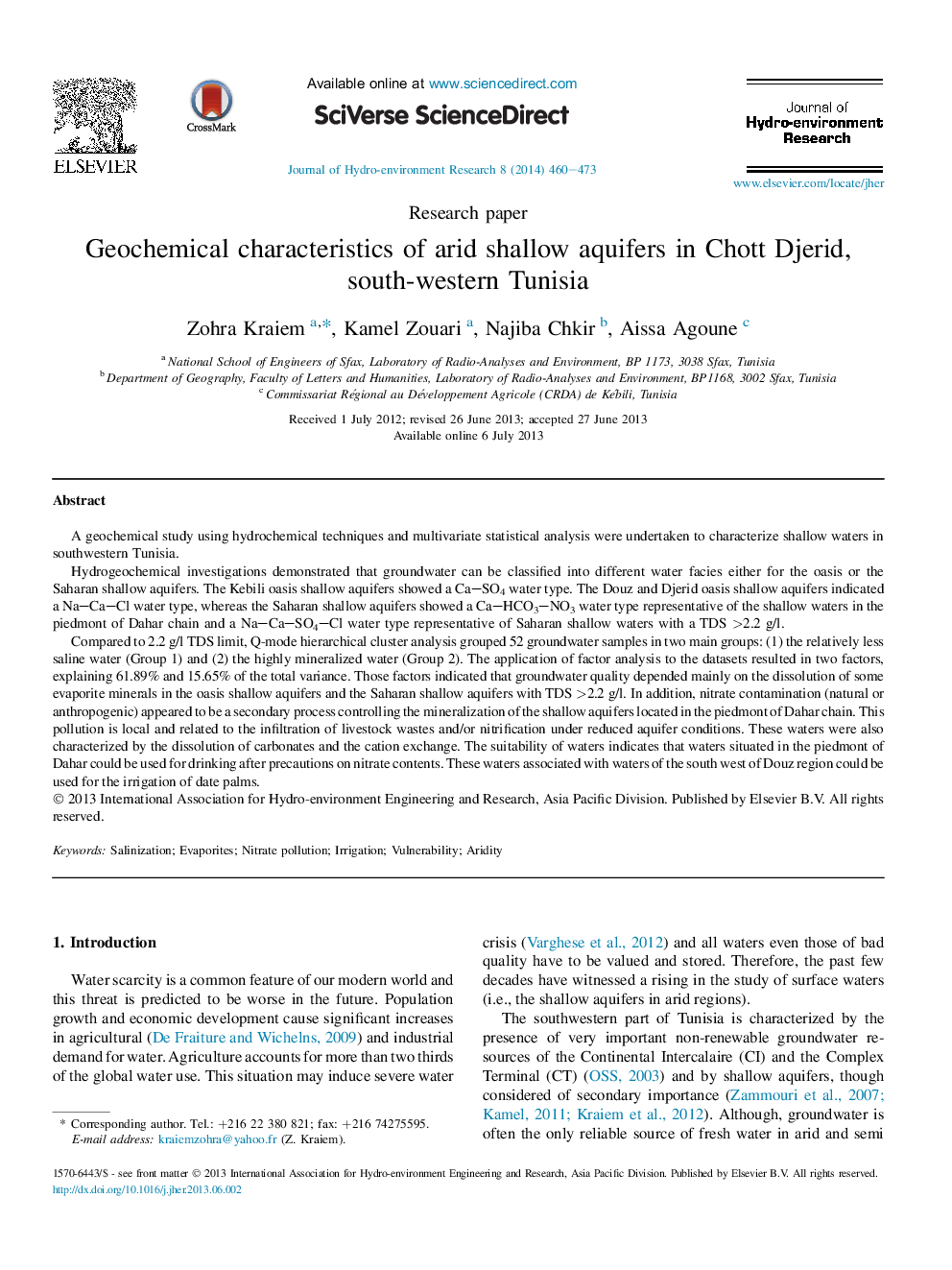| Article ID | Journal | Published Year | Pages | File Type |
|---|---|---|---|---|
| 4493663 | Journal of Hydro-environment Research | 2014 | 14 Pages |
•We examine the geochemical characteristics of shallow aquifers in southwestern Tunisia.•Classification of shallow aquifers based on the salinity was demonstrated.•Geochemical processes were identified.•This study aids valuation of shallow waters in Southwestern Tunisia mainly for agricultural use.
A geochemical study using hydrochemical techniques and multivariate statistical analysis were undertaken to characterize shallow waters in southwestern Tunisia.Hydrogeochemical investigations demonstrated that groundwater can be classified into different water facies either for the oasis or the Saharan shallow aquifers. The Kebili oasis shallow aquifers showed a Ca–SO4 water type. The Douz and Djerid oasis shallow aquifers indicated a Na–Ca–Cl water type, whereas the Saharan shallow aquifers showed a Ca–HCO3–NO3 water type representative of the shallow waters in the piedmont of Dahar chain and a Na–Ca–SO4–Cl water type representative of Saharan shallow waters with a TDS >2.2 g/l.Compared to 2.2 g/l TDS limit, Q-mode hierarchical cluster analysis grouped 52 groundwater samples in two main groups: (1) the relatively less saline water (Group 1) and (2) the highly mineralized water (Group 2). The application of factor analysis to the datasets resulted in two factors, explaining 61.89% and 15.65% of the total variance. Those factors indicated that groundwater quality depended mainly on the dissolution of some evaporite minerals in the oasis shallow aquifers and the Saharan shallow aquifers with TDS >2.2 g/l. In addition, nitrate contamination (natural or anthropogenic) appeared to be a secondary process controlling the mineralization of the shallow aquifers located in the piedmont of Dahar chain. This pollution is local and related to the infiltration of livestock wastes and/or nitrification under reduced aquifer conditions. These waters were also characterized by the dissolution of carbonates and the cation exchange. The suitability of waters indicates that waters situated in the piedmont of Dahar could be used for drinking after precautions on nitrate contents. These waters associated with waters of the south west of Douz region could be used for the irrigation of date palms.
